► Aston Martin Rapide AMR
► Performance-spec four-door driven
► The very end of the non-turbo V12
Say goodbye to Aston Martin’s absolutely stonking naturally-aspirated V12, as this Rapide AMR is the last new car you can order with it in a road car.
Why? Because every other use of a V12 within Gaydon right now either has turbo power like in the DB11, or hybrid assistance if you’re busy ogling at a Valkyrie. You can’t order an outgoing Vanquish from new anymore, only from stock, and the ultra-exclusive Zagato models have all sold out.
Aston’s new Vanquish will be a hybrid V6, as will the Project 003 hypercar, and the DBX (technically the Rapide’s replacement) is expected to use an AMG-derived V8 like the Vantage. Did you get all of that?
So this is the end of an era, then…
Quite so. But the 5.9-litre V12, tickled by Aston Martin’s hardcore skunkworks, is quite a way to end it. It’s good for 595bhp and 465lb ft, which are very old-school power figures; maximum power isn’t accessed until 7,000rpm and the torque curve feels smooth getting to that point – no power lumps make for little in the way of unpredictability when pushing on mid-corner. Just swift progress that only gets swifter the more you wind that rev counter upwards, with maximum thrills available to those confident enough to reach that metaphorical top shelf.
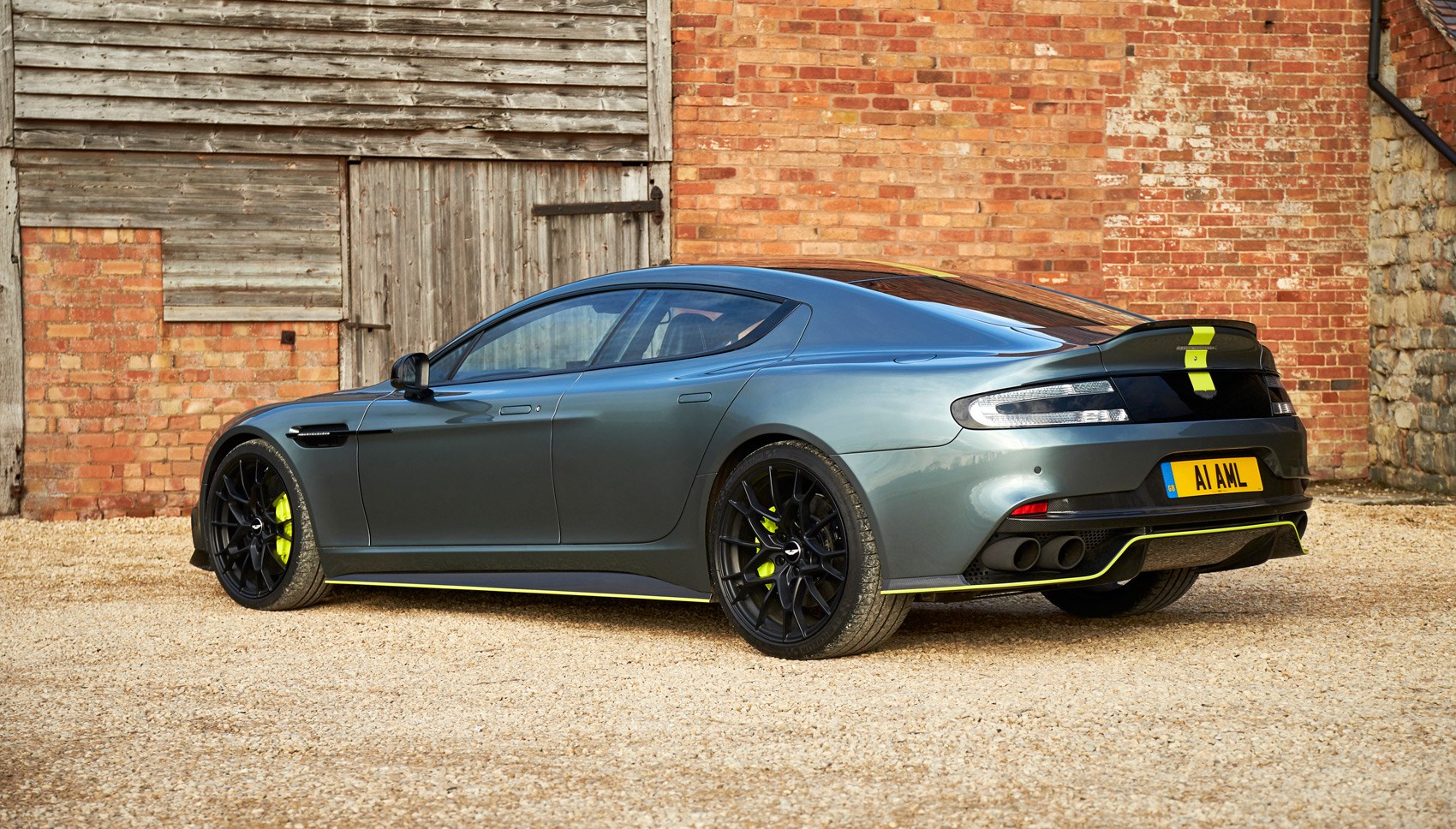
Then we get to the noise. Aston’s naturally-aspirated V12 will always be one of the best sounding engines on planet Earth, so when it’s piped through a stainless-steel, quad-pipe sports exhaust system, the aural delights are biblical.
It’s so loud, regardless of whether you’re in the Sport powertrain mode (operated on the steering wheel) or not, that you think it’s mid-rear or rear engined. But you never feel embarrassed by the excess – the tone is so tuneful you never want it to go away if you have any soul left within you.
And if you approach a corner?
Well, the AMR is certainly the most dynamic of Rapide models. It’s the first to get carbon ceramic brakes, huge swathes of bodywork are now carbonfibre so the kerb weight just steps under two tonnes, the engine is front-mid mounted for a near-perfect weight distribution, fat wheels shod in Michelin Pilot Super Sport rubber and a limited-slip differential all play their part in the potent performance cocktail.
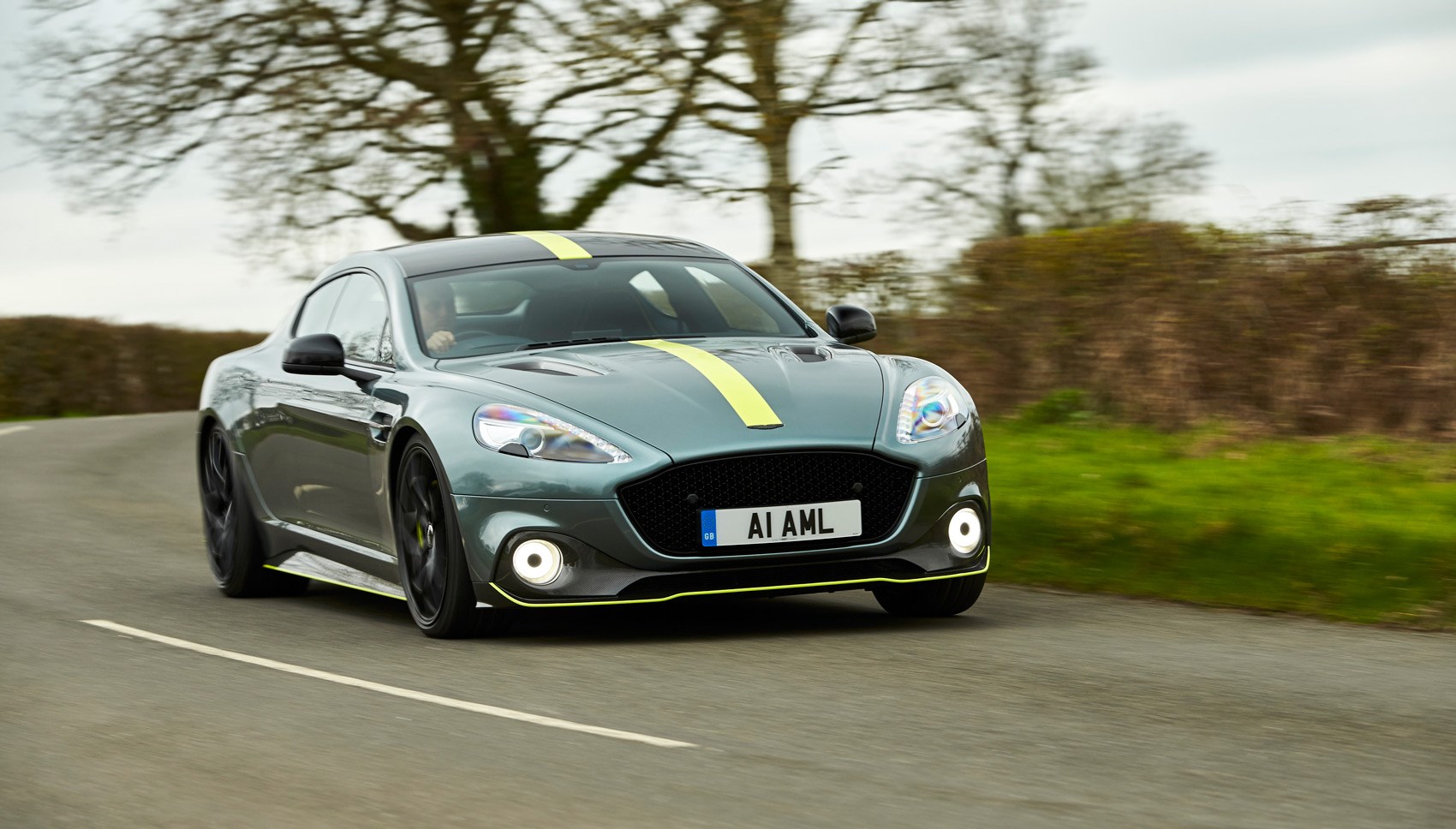
What results is a big, still-quite-heavy grand tourer that’s showing its age having the ability to excite. It’s not intimidating to drive quickly, despite the huge power and girth; the steering has a minute (and therefore ignorable) dead spot at dead centre but when there’s any form of lock applied it’s accurate, smooth and barely feels assisted.
Then there’s the ride; yes, it’s lumpy, but anything with a performance edge will be, and the adaptive damping even in its firmer sports setting absorbs so much of the rough terrain that you live with the slight jiggly-ness when pottering about. At the entertaining end of the driving scale, the Rapide corners deftly at speed and has impressive balance, allowing you to apply full throttle corner exits without fear of little more than an exciting shimmy from the rear. The ceramic brakes certainly earn their place, too.
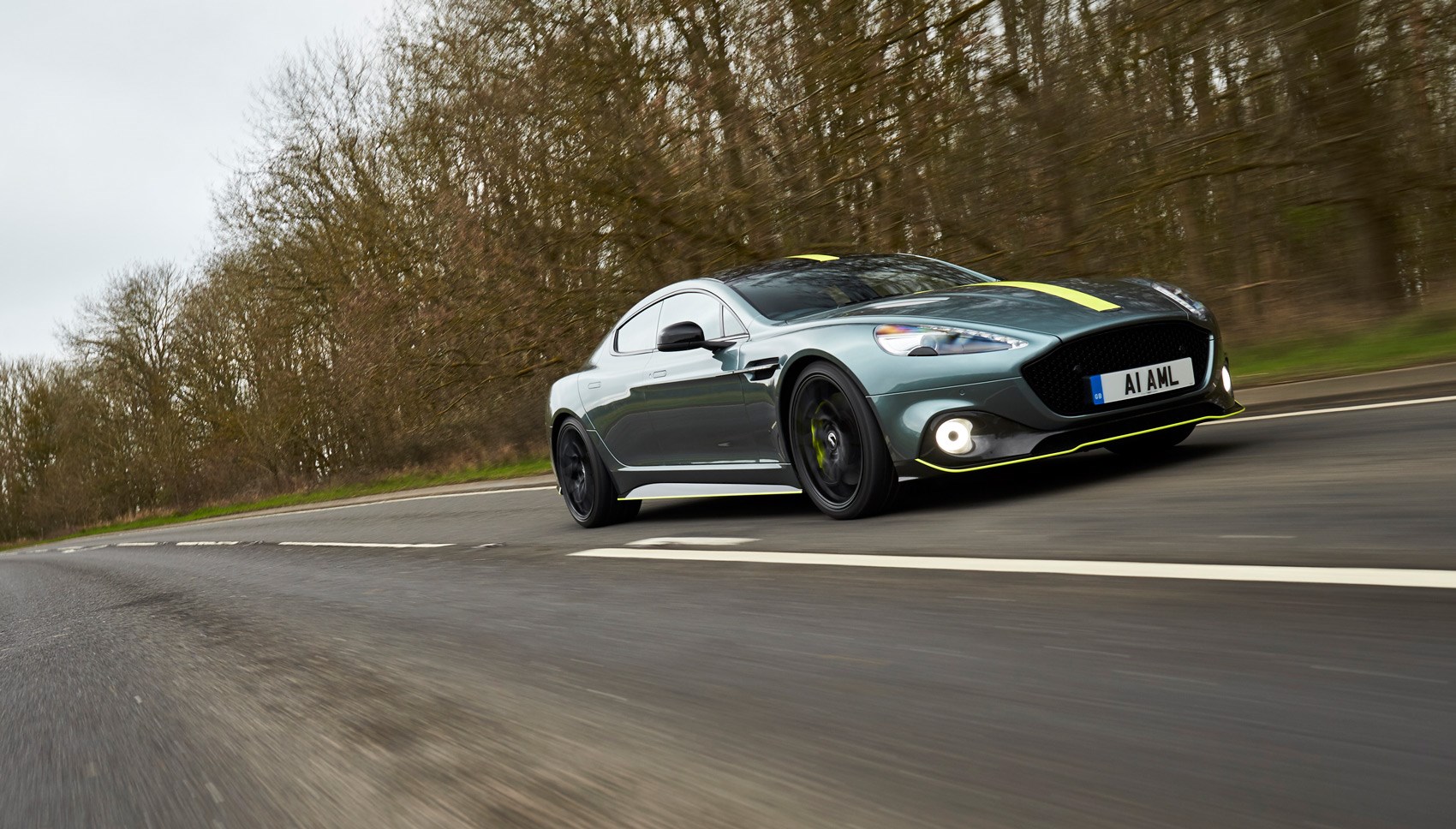
Still a four-seater? Must be nice back there…
It isn’t. If you have been blessed with the gift of a head and/or are over 4ft tall, this will be a no-go zone. An average-sized adult will feel more spacious in the back of a Porsche 911 or VW Up, or even in the cupboard under your stairs than in the back of a Rapide, despite the Aston being longer than a Range Rover.
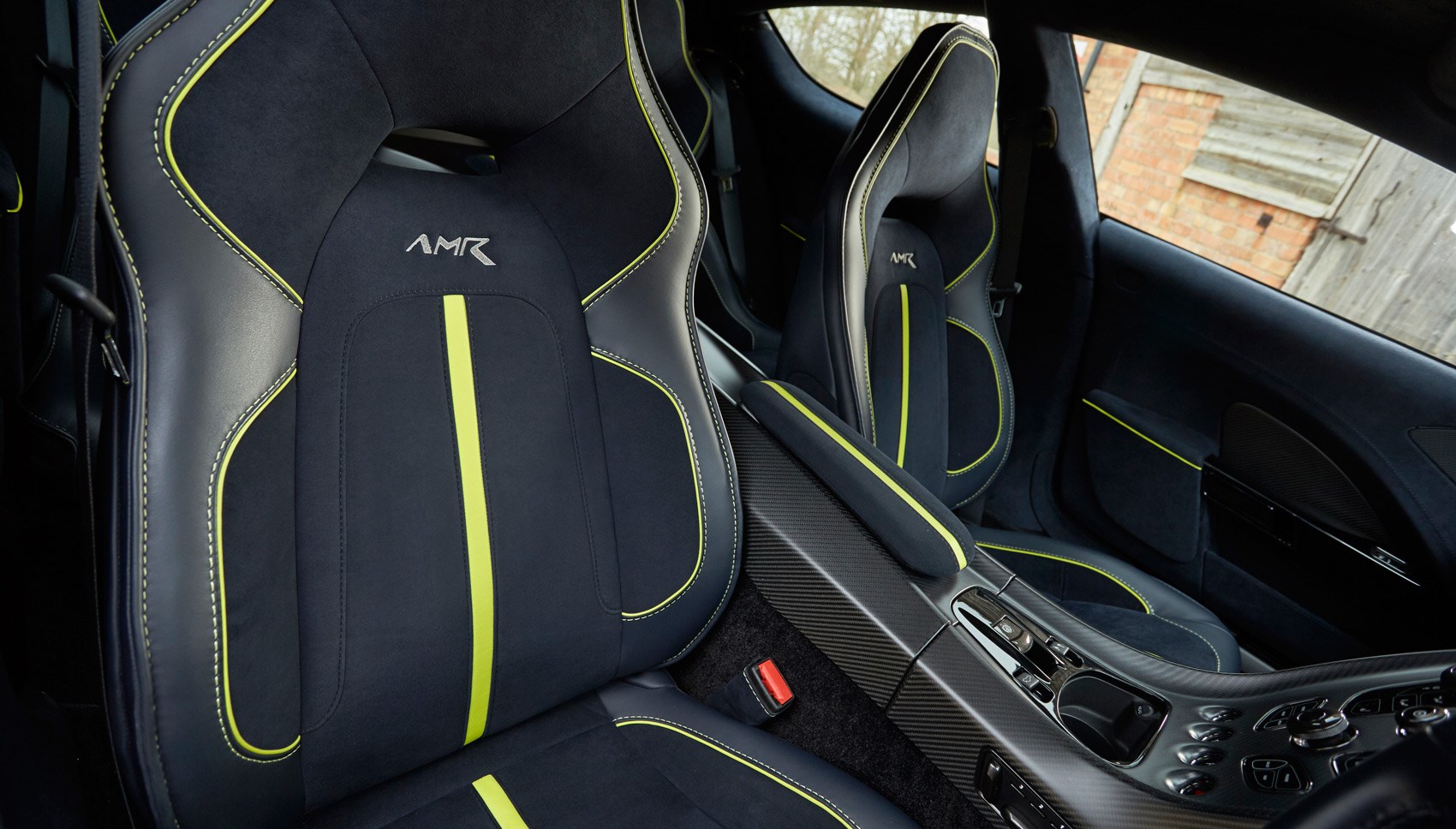
Still, there are ISOFIX child seat points for the only folk who will really benefit from the space, if you’re prepared to scratch the carbon centre console or upholstered seats in the first place to get your little one’s Recaro or Britax clipped in.
Are you done?
Not quite. Thankfully this is the last we’ll see of some quite old-school Noughties Aston interiors. The likes of the DB11 and Vantage are not without their cockpit foibles, but the Rapide is of an older and slightly more naff generation of Aston Martin interior.
Positive points are the glitzy instrument dials (albeit without a clear redline when wringing out the V12), fat steering wheel and satisfying thunks of haptic feedback through the touch-sensitive buttons. AMR has done a world of good to the seats, providing supportive-yet-thin pews clad in Alcantara complete with the AMR green stripe in the case of ‘A1 AML’. You can, of course, negate the look-at-me lime green bits if you so desire – they are available with the Standard design specification or, in the case of this one, the Signature design spec that pairs the lime green accents with Sterling Green paintwork. If it’s not your thing, the ‘Silhouette’ style replaces the lime green with grey or white.
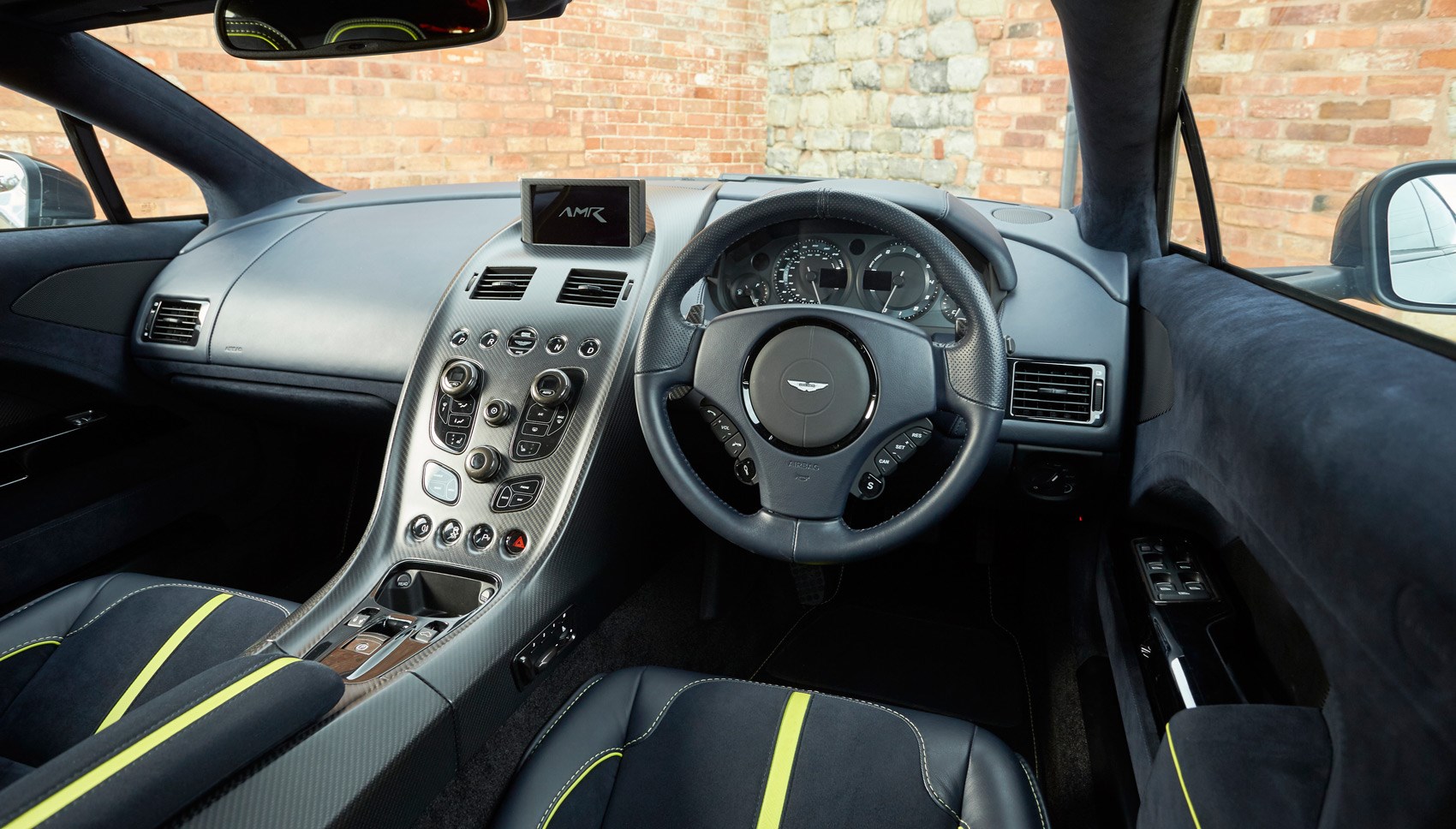
Still, it’s quite hard to see out of, the indicator stalks are criminally hollow and the buttons that selected gears and changed the drive modes felt a little wobbly. Aston was keen to point out that A1 AML was a prototype, so take these points with a pinch of salt. The infotainment was okay and navigated via a fat dial in the centre, but the screen is small and a fair distance away, so the map is hard to read. Regardless, if you get lost, you’re in something entertaining to find your way again.
Aston Martin Rapide AMR: verdict
It’s big, has the outward visibility of a submarine and is a bit OTT but this old dog still has some new tricks to show the sniggering, digital-obsessed, emissions-regulated millennial sports cars out there.
Stuff the fact you can’t use the rear seats if your age is in double digits, the Rapide AMR is capable of covering great distances and supplying you with big smile on your face the whole way. Smooth power under your right foot, an orchestral symphony providing such a scintillating backing track to life on the road and the ability to steer it like something much smaller than its size when the feeling takes you is enough to really entertain.
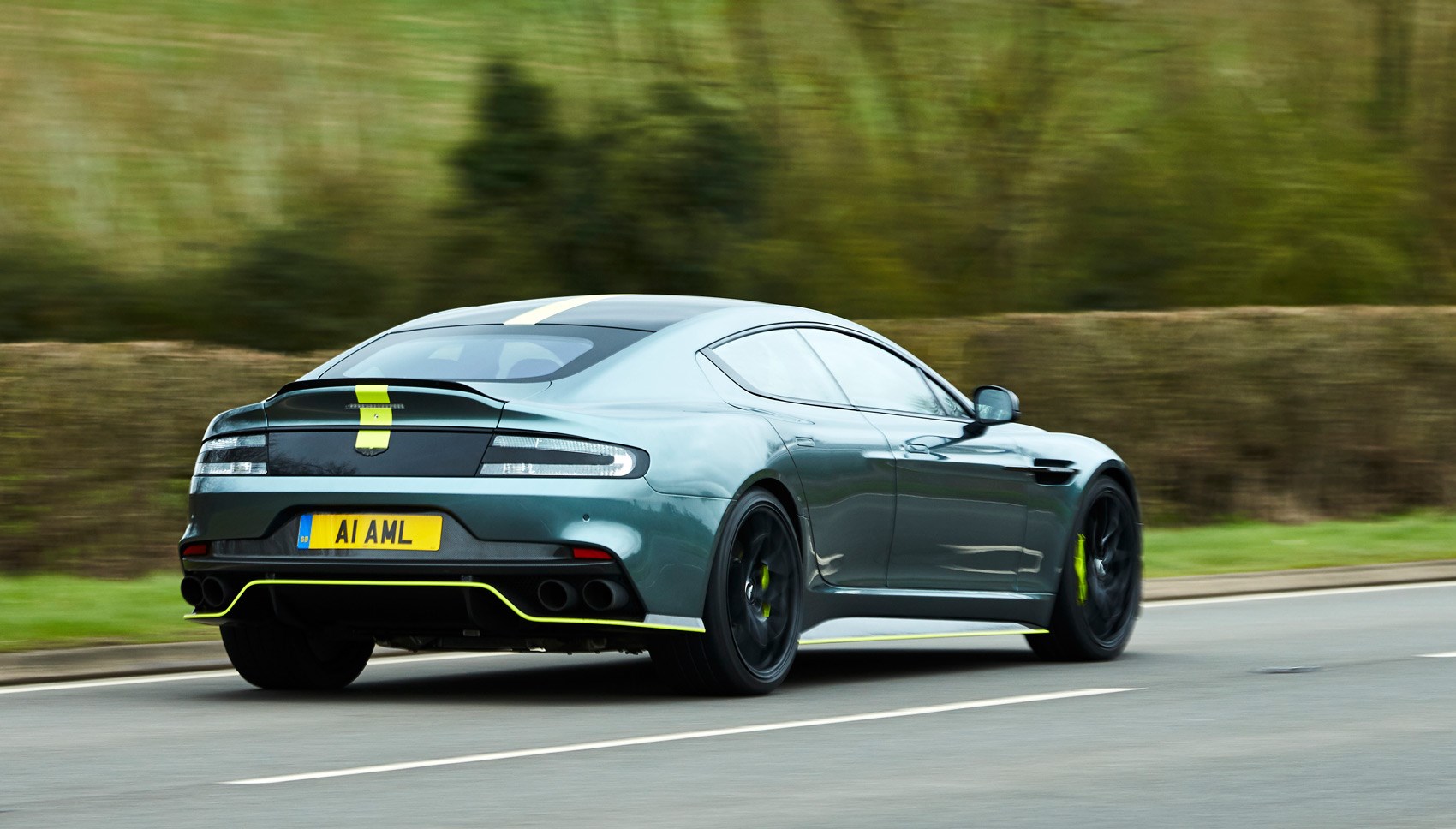
Check out our Aston Martin reviews